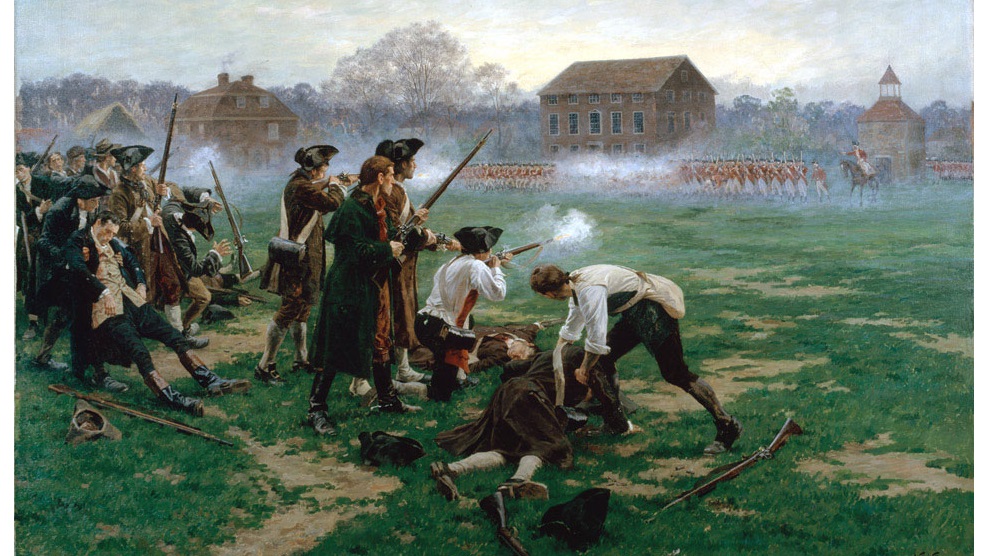Oswald Spengler was one of the most important German conservative philosophers of history of the first half of the 20th century. The first volume of his great work, The Decline of the West, was published in 1918, and the second volume just turned 100 years old in 2022.
Spengler’s work has not lost any relevance over the century that has passed since it was released, but rather has become increasingly significant: it is now one of the inescapable foundations of the philosophy of history. Many of the predictions concerning the fate of humanity—especially the distinctions Spengler drew between culture and civilization—do not seem to contradict the major ideological, political, artistic, cultural, social, and economic trends of the present day. However, Spengler’s other ideas, such as those concerning the supposed ‘simultaneity’ of cultures and civilizations and the doctrine of analogy that can be drawn from them, have not stood the test of time and criticism, although the methodology Spengler used to develop his theory of cultural and civilizational analogies was under sharp attack from historians and philosophers already in his own day. It was common among historians when the work was first published to poke fun at certain of the author’s insights, which some interpreted as misguided and superficial analogies between the spirituality of ancient civilizations and the worldview of modern man, or as an overly imaginative and ‘free’ treatment of historical fact, but this does little to detract from the significance and value of Spengler’s work as a whole. The Decline of the West—the original title in German is Der Untergang des Abendlandes, or the ‘fall’ [Untergang] of the West—was clearly not written to depict the past of humanity in precise detail, in a way that could be proven in the sense of natural scientific objectivity, but as an attempt to break with a dominant narrative—and in this respect the work can be considered very successful.
The most important feature of the political, social–philosophical message was that it was completely at odds with the optimistic progressive spirit that pervaded the philosophy of history of the 18th century (Voltaire and Condorcet in France; Herder and Kant in Germany; and the ‘Whig narrative’ of the British) and the 19th century (the ‘social physics’ of Hegel, Marx, Comte, and Spencer, or the so-called ‘Ranke school’). It was Spengler who, after certain antecedents (Vico, Nietzsche, and Goethe[1]), gave a powerful new formulation to the doctrine of historical cycles.
The cyclical approach is one of the oldest European reflections on time and history:
it was a dominant approach to thinking about history already before Christianity, but also in the Christian Middle Ages. In the Jewish and Christian tradition, cyclical thinking also appears in the Book of Daniel (Daniel 2:1–49) concerning the prophetic destruction of the world empires.
The idea of cyclicality was also highlighted in the Greek mythological–historical tradition (Hesiod), which was later joined by Plato as well (Timaeus). This is one of the political equivalences of mythological thinking, which Spengler also drew on in The Decline of the West as well as in his explicitly socially oriented works. It is the so-called ‘anacyclosis doctrine’, the idea of alternation of government and state forms derived from Plato and Aristotle, which was developed in its most complete form by Polybius. According to this view, the history of the various forms of government can be depicted as a process of decline and change, from the emergence of the ‘just king’ from the indeterminate and chaotic primordial state of society to the power of the debauched demagogue. This ultimately creates a state from which a leader capable of restarting the cycle can emerge again. In this perspective, there is no linear progression, but only periods of decline or development; a leader or elite can ensure the flourishing of society, but there is no guarantee that humanity has a universal historical purpose or direction; and the present does not have a self-evident surplus of value over the past. At any moment it is conceivable that an achieved state will be destroyed, degenerate, or fall back into nothingness since in infinite historical space and time everything will once be undone, as history has neither direction nor purpose:
there is only creation and destruction, just as nature is constantly created and destroyed,
and it is only the forms of the transcendental world, or ‘patterns’, that are eternal—these primordial patterns, standing above the world process, are repeated and leave a kind of imprint on time. In Dezső Csejtei’s interpretation, Spengler’s aim with his great work was above all ‘to overturn the dominant Western Christian conception of history…The most important elements of this conception—which largely remain to this day—are linearity, the principle of development, and the teleological character of meaning’.[2]
As Spengler puts it, when ‘the ideal, the full richness of inner potentiality, is fulfilled and realized in the external, then culture suddenly becomes rigid, withers, its blood coagulates, its forces break—it becomes civilization’.[3] In his attitude, the emergence of civilization is the ‘inevitable fate of all cultures’[4], a fate that appears in a fatal way, like death and old age in biological organisms. The duality of culture and civilization is thus for him the two sides of the rising and declining cycles of history.
The distinction between culture and civilization was, of course, made long before Spengler. The concept of civilization was introduced into German and English through French mediation from the Latin words ‘civitas’ (city) and ‘civilis’ (citizen) but it was only in the second half of the 18th century that it began to be used in connection with a state of progress and development.[5]
Civilization was thus understood first and foremost as a distinction from barbarism—similar to the Greco–Roman authors who considered as ‘barbarians’ those peoples and tribes who were outside their borders—which for the Greeks coincided with Hellas, the later colonial empire and the borders of the Hellenistic states, and for the Romans ended in the Limes. Most of the Enlightenment writers, like the Greeks and Romans, believed that peoples who had no civilization (that is, no cities proper) had no ‘culture’ either. Thus, neither Greco–Roman antiquity nor the Enlightenment distinguished between the two concepts—it is another matter, of course, that the Greco–Roman view did not attach any particular importance to temporality and development in the process of civilization. In ‘suitable’ peoples, civilization appears in an organic way, as it were, just as a flower sprouts from a seed. The concept of ‘culture’ (Latin: cultivation) is also of ancient origin—it is attributed to Marcus Tullius Cicero, who used it in his Tusculan Disputations in the sense of ‘cultivation of the soul’ and in relation to philosophy (‘Cultura animi philosophia est’[6]).
The concept of culture was first sharply distinguished from civilization by Kant. Kant used the concept of culture in a Ciceronian sense, in which culture is how a man becomes man: civilization, however, means a kind of social civility, ‘elaborateness’, ‘refinement of habits’[7], and with it all that makes life—in the material sense—comfortable and pleasant.[8] The creation of true culture, for Kant, thus implies a kind of deeper morality, a goal to be pursued, not necessarily associated with civilization: for Kant, the goal of the Enlightenment would be precisely to raise the level of civilization achieved to that of true culture.
Spengler, at the same time, has completely reinterpreted Kant’s distinction: for him, it is culture that in all respects—in time, in ideas, in importance—is far ahead of civilization—something that can only be compared to Goethe’s transcendental ‘primordial phenomenon’ of natural science (Urphänomen). ‘Culture is the primordial phenomenon of all past and future world history,’[9] he writes, culture is thus the ultimate unity of history behind which there is no going back. According to Spengler,
‘cultures are organisms’ and world history is the accumulation of these different cultures, each with a different archetypal symbol.
Human history consists of the emergence, contact, and struggle of cultures independent of each other, so that there is no single world history, but only the coexistence of many cultures: their unfolding, flourishing, existence, and decline. Spengler lists eight cultures (Babylonian, Egyptian, Indian, Chinese, Mexican, antique, Arab, and Western), but only three are discussed in detail. He has also given these three a separate name, referring to the archetypal symbol of the culture in question: ‘Apollonian’ for the Greco–Roman antiquity; ‘magical’ for the Arabic culture; and ‘Faustian’ for the Christian–Western culture following the break-up of the Roman Empire. The latter is essentially the culture or cultural sphere[10] whose fate is of real interest—with the others merely playing the role of illustration, counterpoint, and analogy. The archetypal symbol of Faustian culture is ‘infinite space’ and the ‘Faustian man’ who lives under the spell of conquering this infinity: the desire to conquer space was the inspiration for the crusades as well, just as for the colonization of the world and the expansion of technology throughout the globe from the Age of Discoveries onwards. This has ultimately created a ‘globalized world’ which, however, belongs to the declining, or civilizing, phase of the culture–cultural sphere.
On the one hand, cultures, according to Spengler, have no teleological endpoint—‘[as] living beings of the highest order, they are growing in a sublime mass, like flowers in a field’[11]—, but at the same time, as we can see concerning individual human beings, all cultures express something of the whole of existence. Perhaps Spengler’s most controversial thesis concerns the ‘simultaneity of cultures’: he calls ‘simultaneous’ certain historical facts that appear ‘relatively precisely’ in the same place in the lives of two different cultures and have the same ‘significance’—thus proving that the ‘internal structure’ of cultures is essentially correlative. For example, this is how he sees Ionic art in the antique, ‘Apollonian’ culture and Baroque art in the ‘Faustian’ culture that followed the dissolution of the antique culture, but, in a rather puzzling idea, Spengler also sees the Dionysian movement of ancient Hellas and the Protestant movements of Faustian culture as having the same ‘meaning’.[12]
As Spengler puts it: ‘Culture and civilization are the living body as well as the mummy of a spirituality…Culture and civilization—one is an organism that springs from the landscape, and the other is a mechanism created by its solidification. The cultural man lives inwards, the civilized man lives outwards, in space, between bodies and “facts”. What one of them perceives as fate, the other grasps in the context of cause and effect.’
[1] Already in the preface to the main work, Spengler emphasizes that the greatest influence on the development of his whole approach was exerted by two men: Goethe and Nietzsche.’ (Dezső Csejtei and Anikó Juhász, The Life and Philosophy of Oswald Spengler, Attractor, Máriabesnyő–Gödöllő, 2009, p. 91.
[2] Csejtei–Juhász, 2009, pp. 98–99.
[3] Spengler, Vol. I, 1994, pp. 179–180; 188.
[4] Spengler, Vol. I, 1994, pp. 179–180; 67.
[5] For example, a prominent figure of the Scottish Enlightenment, Adam Ferguson, said: ‘It is not only the individual who progresses from childhood to adulthood, but the race itself which passes from roughness to civilization.’ (T. Cadell, An Essay of the History of Civil Society, London, 1782, p. 2.)
[6] Marcus Tullius Cicero, Cicero: Tusculanae Disputationes, II. 5. 13., Ernst Alfred Kirkel (ed.), Reclam, Stuttgart, 1997, p. 162.
[7] Lord Shaftesbury, Hume, and Burke interpreted the concept of civilization in a similar sense—and in our country it was also linked to the concept of ‘dressing up’.
[8] Immanuel Kant, Idea for a Universal History with a Cosmopolitan Aim, 1784.
[9] Spengler, Vol. I, 1994, p. 185.
[10] It is worth clarifying the use of the term, as Spengler essentially means by ‘culture’ both the cultural sphere itself and the first, or ‘cultural’ phase of the cultural sphere—the second phase being ‘civilisation’ itself.
[11] Spengler, Vol. I, 1994, pp. 184–185.
[12] Spengler, Vol. I, 1994, pp. 196–197.
Read more on the philosophy of Oswald Spengler:








